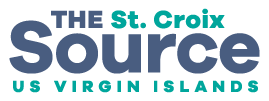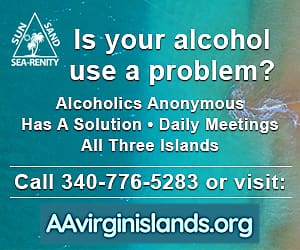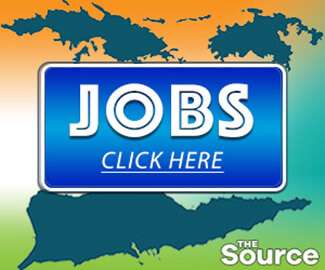
It was at the Paul M. Pearson Gardens housing community on St. Thomas when I heard that a rubber tree was cut down because young men were smoking kaya under the tree. In other words, they were smoking marijuana. Do you think by cutting down a tree it solves our problems with marijuana smoking in the Virgin Islands? You tell me. I was in grammar school when this stupidity of cutting down a tree happened. You would think in this day and age we would get our act together and understand that trees are our friends and not our enemies.

After Tropical Storm Ernesto passed across the Virgin Islands in August, it was brought to my attention that some public roadside trees on St. Croix were indiscriminately butchered like chop meat for the market. You know what the excuse I was told? The trees might catch afire with the wires of the poles. These trees across from the old H&H Tire Company on Queen Mary Highway have been there for donkey years. They were there when Hurricane Hugo impacted the Virgin Islands in 1989, especially the island of St. Croix, and as recent as the Ernesto storm of this year.
I am not a person by nature who complains. I like to see things get done properly where the community benefits. It started over 30 years ago when I came home from graduate school. I saw the trees on Queen Mary Highway needed care and attention. Believe me, trees on the highways and public roads of the Virgin Islands can become hazards to the general public, especially with dead hanging branches, cavities or rotten wood of the trunk, and mechanical injuries done by vehicles and poles where wires ran through them if not pruned properly.
Anyway, I took the initiative by asking different government agencies, such as the Department of Agriculture, Public Works and Planning and Natural Resources, who are responsible for the maintenance of trees along our public roads. I never got a straight answer. Nobody seems to be responsible for public trees along our highways and roads. About two years later, after my investigation as to who is responsible for our roadside trees, the late Gov. Alexander A. Farrelly called me to ask if I was willing to serve on the newly established Urban Forestry Board Council of the Virgin Islands.
I said, “Sure Governor, anything to help my Virgin Islands community.” On the urban forestry board, there were representatives from government agencies such as WAPA, Public Works, administrators from each island’s district, and individuals from the community, which included private companies. I believe the tree board had 16 members. We had an urban forest coordinator who managed the Virgin Islands community’s urban forestry program and worked in conjunction with the USDA Forest Service International Institute of Tropical Forestry of Puerto Rico.

I won’t go into all the details of operation of the forestry council in the Virgin Islands and Puerto Rico. However, one of our greatest accomplishments was getting a law passed to protect trees of the Virgin Islands. It took us, the Urban Forestry Board, about 20 years or more to get a law in place with all the political headache and the necessary mechanics of having something in place for managing trees properly in an urban community setting like the Virgin Islands.
In fact, a representative from WAPA, who is also a member of the forestry board, testified at the public hearing in support of passing the law to protect trees in the Virgin Islands. In 2019, Bill No. 32-0062, “The Community and Heritage Tree Law of the Virgin Islands,” was signed into law by Gov. Albert Bryan Jr. Therefore, unless an individual or entity of the government such as WAPA has an approved permit from the Virgin Islands Department of Agriculture, it is considered an offense to cause any destruction to or take any portion of a public tree, and it is punishable by law.
This tree law is supposed to be enforced by the Virgin Islands Department of Agriculture. And if the department needs assistance enforcing the tree law, they can request it from the Department of Planning and Natural Resources. No one in the Virgin Islands, including government agencies, has the authority to cut down public trees along our public highways and roads without going through the proper procedures.
In the past, the School of Agriculture of UVI, the USDA Forest Service International Institute of Tropical Forestry of Puerto Rico, and other entities such as the International Society of Arboriculture (ISA) have conducted many trainings for individuals, private companies, and government agencies that are interested in the proper management of trees in the Virgin Islands. Once you pass the written and physical training of the tree biology test, individuals can be certified as an arborist. An arborist should be present at all times when trees are being pruned, removed, etc.
There is a right way to prune trees that wouldn’t interfere with pole wires. Too often, I have seen poles planted right next to trees. And late on, the tree was blamed for interfering with the wires of the poles. I have seen also trees planted on the public roads which shouldn’t be planted there. However, at times there might be an emergency where a tree needs to be removed, which requires an arborist assessment before any action can take place.
Nevertheless, there is a proper channel where everybody needs to be on the same page. Whenever a tree is removed, according to the law, it needs to be replaced. Thus, to remove roadside trees in the Virgin Islands, a permit must be obtained by the Department of Agriculture whether for pruning or removal, and they must follow the guidelines and the best management practices.
Preston H. Brooks, a certified arborist and coordinator for the Virgin Islands Urban Community Forestry Program and employed by the Department of Agriculture, paid by the federal government not local government, is the person to contact about trees, especially roadside trees. WAPA or any other government agencies, private companies, or individuals should contact Mr. Brooks for professional training of urban forestry. His email address is preston.brooks.ctr@doa.vi.gov and his phone number is 340-778-0997, ext. 3314, or 340 208-9635.
It is high time we protect our trees instead of cutting them down and complaining that the island is hot. Trees are our best friends who help keep our islands cool from global warming.
— Olasee Davis is a bush professor who lectures and writes about the culture, history, ecology and environment of the Virgin Islands when he is not leading hiking tours of the wild places and spaces of St. Croix and beyond.










